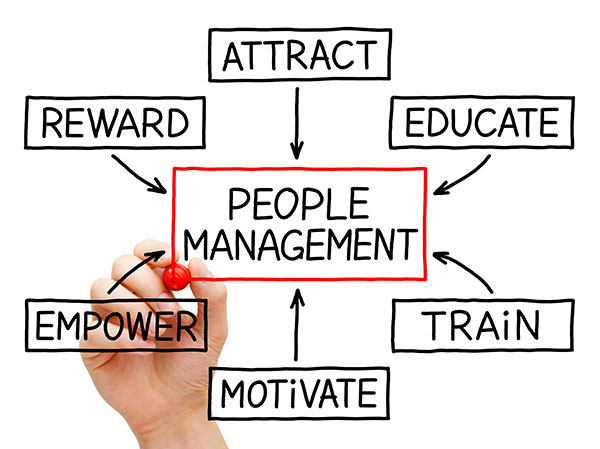Effective Change Communication Strategies
Master the art of communicating organizational change to ensure success
Understanding the Importance of Change Communication
In today's rapidly evolving business landscape, organizational change has become a constant rather than an exception. Whether it's implementing new technologies, restructuring departments, or shifting business strategies, how these changes are communicated can make the difference between success and failure.
According to research, nearly 70% of organizational change initiatives fail, with poor communication consistently cited as one of the primary reasons. At Al Mithaq Institute, our experts in Change Management and Business Administration have identified that effective communication strategies can increase the success rate of change initiatives by up to 80%.
Key Challenge:
Most change initiatives fail not because of poor planning, but because of poor communication that fails to address employee concerns and build genuine buy-in.
Core Principles of Effective Change Communication
1. Transparency and Honesty
Being transparent about the reasons for change, its implications, and potential challenges builds trust. Even when all details cannot be shared, acknowledge what you can and cannot disclose. Our Cognitive Behavioral Therapy and Psychological Counseling experts emphasize that honesty prevents the rumor mill from generating anxiety-inducing misinformation.
2. Clear and Consistent Messaging
Mixed messages create confusion and undermine confidence in leadership. Ensure that all communication about the change is consistent across different channels and from different leaders. This principle is particularly emphasized in our Negotiation Psychology and Communication Skills training programs.
3. Two-Way Communication
Change communication should never be a one-way broadcast. Create channels for feedback, questions, and concerns. Actively listen to employee input and demonstrate that their perspectives are valued. This approach aligns with methodologies taught in our Emotional Intelligence and Leadership Communication courses.
Plan Communication
Create a structured timeline for communicating change at each stage
Segment Audiences
Tailor messages for different stakeholder groups and their concerns
Measure Effectiveness
Use surveys and feedback to gauge understanding and acceptance
Creating a Change Communication Strategy
Developing a comprehensive change communication strategy involves several critical steps:
- Analyze stakeholder impact: Identify how different groups will be affected by the change and what their primary concerns might be.
- Define key messages: Create core messages that explain the why, what, how, and when of the change.
- Select appropriate channels: Determine which communication channels will be most effective for different audiences and messages.
- Create a timeline: Develop a schedule for when different messages will be communicated throughout the change process.
- Prepare for resistance: Anticipate objections and prepare thoughtful responses that address underlying concerns.
Communication Channel Selection Matrix
| Channel | Best For | Limitations |
|---|---|---|
| Town Halls | Initial announcements, addressing collective concerns | Not ideal for detailed discussions or personal concerns |
| Team Meetings | Detailed discussions about implementation | Time-consuming to conduct across large organizations |
| Email Updates | Regular progress reports, documentation | Can be ignored or misinterpreted, no immediate feedback |
| One-on-One Conversations | Addressing personal concerns, coaching through change | Resource-intensive, inconsistent messaging risks |
Addressing Resistance to Change
Resistance to change is natural and should be expected. According to our experts in Psychology of Change Resistance in Organizations and Organizational Behavior, resistance typically stems from:
- Fear of the unknown or uncertainty about the future
- Perception of threat to job security or status
- Lack of understanding about the reasons for change
- Previous negative experiences with change initiatives
- Disagreement with the proposed changes
Effective communication strategies to address resistance include:
Acknowledge Emotions
Validate feelings and concerns without being dismissive. Create safe spaces for expressing emotions about the change.
Provide Context
Help people understand the bigger picture and why change is necessary for organizational success and sustainability.
Highlight Benefits
Clearly articulate both organizational and personal benefits that will result from the change.
Provide Support
Offer resources, training, and support systems to help people adapt to new roles or processes.
The Role of Leadership in Change Communication
Leaders play a crucial role in communicating and championing change. As taught in our Leadership Communication and Change Management programs at Al Mithaq Institute, effective leaders:
- Model the behavior and attitudes they expect from others
- Are visible and accessible throughout the change process
- Demonstrate commitment to the change through their actions
- Listen actively to concerns and respond thoughtfully
- Recognize and celebrate progress and milestones
Training Opportunity
Enhance your change management and communication skills with Al Mithaq Institute's specialized programs in:
- Psychology of Change Resistance in Organizations
- Effective Communication in Matrix Organizations
- Leadership During Crisis
- Strategic Planning for Digital Transformation
Contact us to learn more about our comprehensive training options.
Measuring Communication Effectiveness
To ensure your change communication strategy is working, it's essential to measure its effectiveness. Methods for assessment include:
- Pulse surveys to gauge understanding and acceptance
- Feedback sessions and focus groups
- Monitoring of questions and concerns raised
- Assessment of behavior changes and adoption rates
- Evaluation of key performance indicators related to the change
FAQs About Change Communication
When should we begin communicating about upcoming changes?
Communication should begin as early as possible, even before all details are finalized. Early communication helps prevent rumors and allows people time to process the change.
How much information should we share about organizational changes?
Share as much information as possible while respecting confidentiality requirements. When you cannot share certain details, explain why, and provide a timeline for when more information will be available.
How do we handle negative reactions to change?
Acknowledge negative reactions as valid, listen actively to concerns, provide support, and focus on addressing underlying fears rather than dismissing them.
Should different stakeholders receive different messages?
Yes, communication should be tailored to different stakeholder groups based on how the change affects them and what information is most relevant to their roles and concerns.
Conclusion
Effective change communication is not just about disseminating information; it's about creating understanding, building buy-in, and supporting people through transitions. By applying the strategies outlined in this article, organizations can significantly increase the success rate of their change initiatives.
At Al Mithaq Institute, we offer comprehensive training programs in Change Management, Business Communication, and Leadership that can help you and your organization develop the skills needed to navigate change successfully. Our courses combine theoretical knowledge with practical applications, ensuring that participants can immediately apply what they learn to real-world challenges.
About the Author: This article was prepared by the Business Administration and Change Management faculty at Al Mithaq Institute for Educational Services in Dubai, licensed by the Knowledge and Human Development Authority (KHDA).







